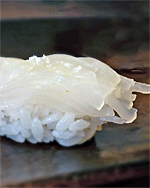Seaweed as Food? A Growing Market Worldwide
 Special to Road Trips for Foodies
Special to Road Trips for Foodies
According to a report published by Allied Market Research, titled, “Seaweed Market by Product and Application: Global Opportunity Analysis and Industry Forecast, 2018 to 2024”, the global seaweed market was valued at $4,097.93 million in 2017, and is projected to reach $9,075.65 million by 2024, registering a compound annual growth rate (CAGR) of 12.0% from 2018 to 2024.
In 2017, the red seaweed accounted for more than eight-ninths share of the global market, in terms of value.
Seaweed, also called as macro-algae, belongs to several species of macroscopic, multicellular, marine algae. It is classified into three broad groups based on pigmentation, which include red, brown, and green seaweed.
The major utilization of these seaweeds as food and food ingredients is in Asia-Pacific, particularly in China, Indonesia, Philippines, Korea, and Japan where seaweed cultivation has developed into a huge industry. Seaweed farming is becoming an increasingly competitive market for food and related products across the globe.
Growing application of seaweed in various end-use industries is anticipated to drive the market growth. The human food segment accounts for the highest market share, owing to increase in utilization of seaweed for human consumption.
Substances that are extracted from seaweeds such as hydrocolloids make up most of the remaining market share, while smaller application such as fertilizers, animal feed additives, aquaculture, biomass for fuel, and wastewater treatment make up the rest. Seaweeds are being extensively explored as a fuel, due to their high photosynthetic efficiency and their ability to produce lipids, a biodiesel feedstock which is anticipated to open new avenues for the seaweed manufacturers.
Moreover, high untapped market potential in North America and Europe is expected to boost the consumption of seaweed during the forecast period. However, unfavorable climatic conditions and fluctuation in the prices of seaweed hamper the market growth.
Red seaweeds are the largest and most abundant of the seaweeds, and thus hold a dominant position in the global market. Furthermore, they have an economically important role throughout Asia-Pacific, due to the presence of phycocolloids such as carrageenan.
The carrageenan produced from seaweed has a variety of applications in food production as a thickener and stabilizer. Thus, higher consumption of red seaweed in the food industry is anticipated to drive the seaweed market growth.
Key Findings of the Seaweed Market:
In 2017, Asia-Pacific accounted for the highest market share, growing at a CAGR of 11.4% from 2018 to 2024.
In 2017, human food application segment accounted for the highest market share, and is expected to growth at a significant CAGR of 11.8%.
Red seaweed was the highest contributor in 2017, and is projected to grow at a CAGR of 12.3%.
In 2017, the China accounted for more than one-fifth market share, and is anticipated to grow at a significant CAGR of 11.6%.
North America is anticipated to grow at the highest CAGR of 13.0% from 2018 to 2024.
In terms of value, Asia-Pacific and LAMEA (Latin America, Middle East and Africa) collectively contributed more than half of the market share in the global seaweed market in 2017.
Allied Market Research (AMR) is a full-service market research and business-consulting wing of Allied Analytics LLP based in Portland, Oregon.
(Photo of red seaweed courtesy of Edible Vineyard)

















